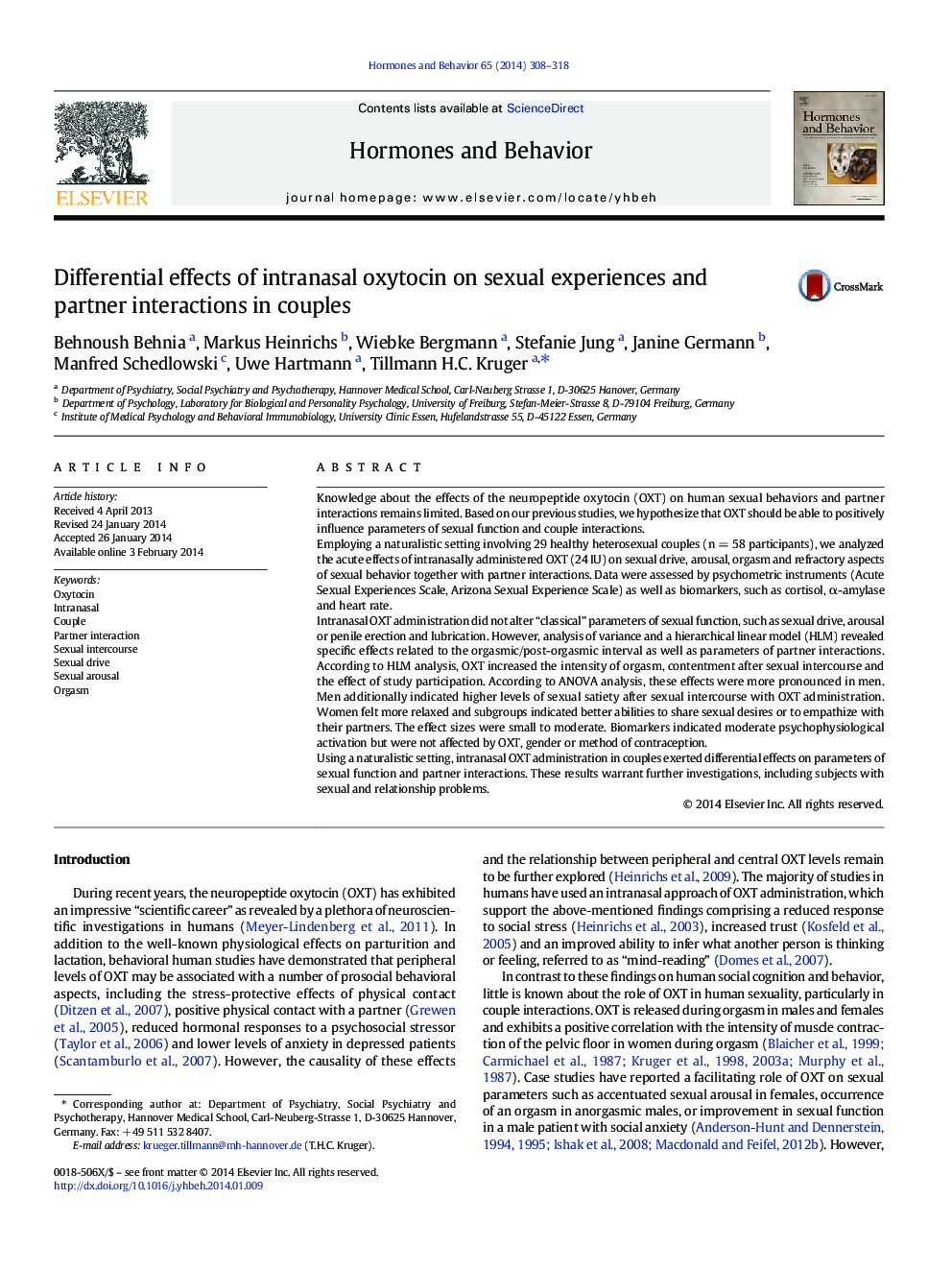| Article ID | Journal | Published Year | Pages | File Type |
|---|---|---|---|---|
| 323090 | Hormones and Behavior | 2014 | 11 Pages |
•OXT differentially affects sexual experience in healthy couples.•Classical parameters of sexual function such as sexual drive, arousal or penile erection and lubrication were not altered.•However, HLM analysis revealed effects related to the orgasmic and post-orgasmic interval as well as partner interaction.
Knowledge about the effects of the neuropeptide oxytocin (OXT) on human sexual behaviors and partner interactions remains limited. Based on our previous studies, we hypothesize that OXT should be able to positively influence parameters of sexual function and couple interactions.Employing a naturalistic setting involving 29 healthy heterosexual couples (n = 58 participants), we analyzed the acute effects of intranasally administered OXT (24 IU) on sexual drive, arousal, orgasm and refractory aspects of sexual behavior together with partner interactions. Data were assessed by psychometric instruments (Acute Sexual Experiences Scale, Arizona Sexual Experience Scale) as well as biomarkers, such as cortisol, α-amylase and heart rate.Intranasal OXT administration did not alter “classical” parameters of sexual function, such as sexual drive, arousal or penile erection and lubrication. However, analysis of variance and a hierarchical linear model (HLM) revealed specific effects related to the orgasmic/post-orgasmic interval as well as parameters of partner interactions. According to HLM analysis, OXT increased the intensity of orgasm, contentment after sexual intercourse and the effect of study participation. According to ANOVA analysis, these effects were more pronounced in men. Men additionally indicated higher levels of sexual satiety after sexual intercourse with OXT administration. Women felt more relaxed and subgroups indicated better abilities to share sexual desires or to empathize with their partners. The effect sizes were small to moderate. Biomarkers indicated moderate psychophysiological activation but were not affected by OXT, gender or method of contraception.Using a naturalistic setting, intranasal OXT administration in couples exerted differential effects on parameters of sexual function and partner interactions. These results warrant further investigations, including subjects with sexual and relationship problems.
